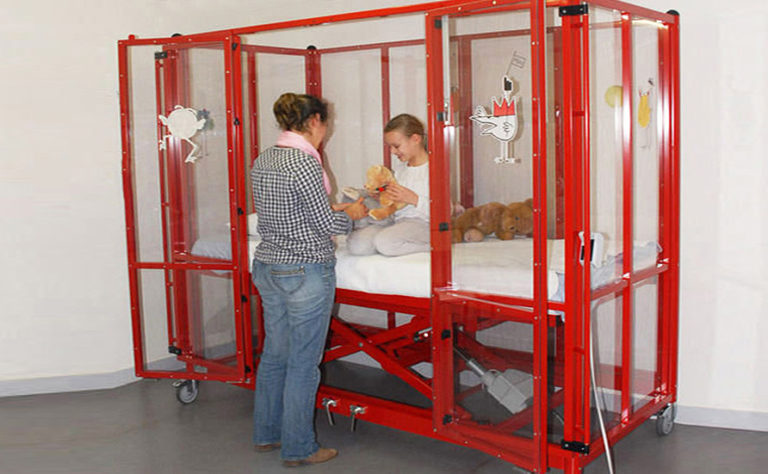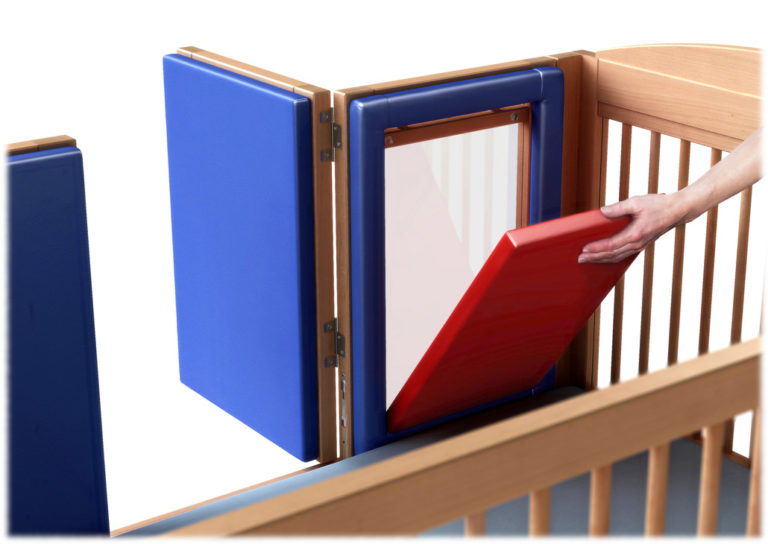Although the choice of the most suitable model can only be made after a study of each individual situation, it is possible to give a few examples. general indications according to the main types of disability.
Muscular hypotonia, polyhandicap, psychomotor retardation, Rett syndrome, syndrome d'Angelman: adapted beds
When a child moves little or not at all, there are 3 main points to bear in mind for choosing an adapted bed :
- to maintain visual contact with everything around the child, the walls of the bed must be transparent (Plexiglas) or equipped with barsif possible on all 4 sides, like our models Luna or Thomas.
- the quality of mattresses is essential, as the child will rely on it for a large part of his life. of the day.
- a electric control to lift the slatted base or the whole bed, to make it easier to get in and out of bed. change, care and sharing, and also help to relieve some of the burden on the family. the mattress (chest or legs).
When the child can crawl, check that the bed base is lowered. the as low as possible to enable the child to become more autonomous by avoiding any accident.




Beds with fabric surrounds are perceived as "enveloping".
Only a personalised study can determine the bed model that's exactly right for you. We're here to listen to you, with no obligation on your part. Let's take the time to talk!
Send us an email to contact@ergosolutions.fr